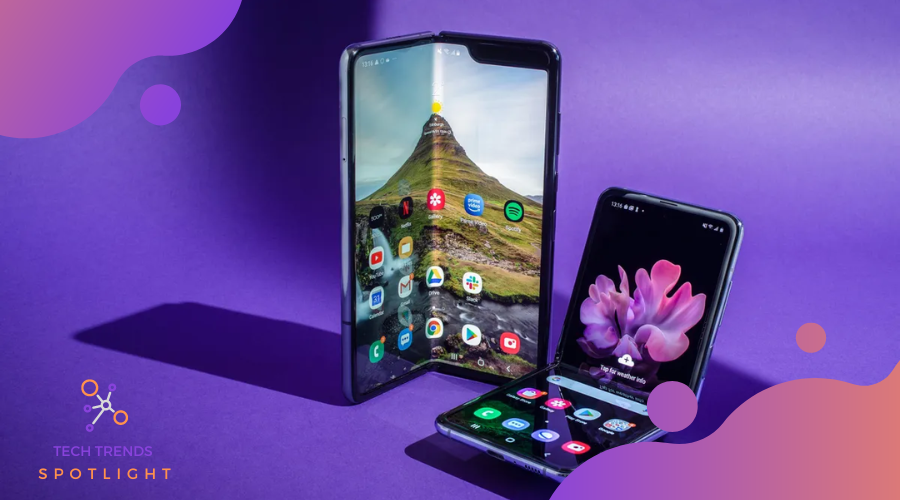The mobile phone industry has seen revolutionary changes over the past few decades, but none quite as dramatic as the advent of foldable phones. As we delve deeper into 2024, foldable technology is not just a novelty; it’s becoming a mainstream feature with substantial benefits and new uses. This blog post explores the rise of foldable phones, the technology behind them, and their impact on the future of mobile communications.
1) The Evolution of Foldable Phones
Foldable phones made their first significant impact in the late 2010s, but early models faced challenges related to durability and cost. By 2024, advancements in materials science and screen technology have largely overcome these hurdles, offering more robust and affordable foldable devices. Today’s foldable phones feature ultra-thin glass and improved hinge mechanisms that endure thousands of folds without degradation.
Manufacturers like Samsung, Huawei, and Motorola have led the charge, each offering unique takes on the foldable concept. Samsung’s Galaxy Fold line has evolved into its fourth iteration, featuring a dust and water-resistant design that appeals to everyday users and tech enthusiasts alike.
2) The Technology Behind Foldable Phones
The core innovation in foldable phones is the flexible display technology, primarily OLED panels that can bend without breaking. These screens use a plastic substrate that is both thin and durable, unlike the glass used in traditional smartphones. The development of foldable OLED technology has been crucial in enabling devices to maintain high-quality displays while offering the flexibility of a foldable design.
Beyond the display, the hinge design is critical. Early foldable phones struggled with visible creases and fragile hinge components. However, by 2024, manufacturers have perfected the hinge design, employing advanced gears and tracks that allow the device to fold smoothly while protecting the internal components from dust and debris.
3) Benefits of Foldable Phones
One of the most significant benefits of foldable phones is their versatility. These devices combine the portability of a smartphone with the larger screen size of a tablet. For example, a typical foldable phone might fit easily into a pocket while folded and expand to twice its size when opened. This versatility makes foldable phones ideal for multimedia consumption, gaming, and productivity tasks that benefit from more screen real estate.
Moreover, the unique form factor of foldable phones allows for new types of software applications. Developers can create apps that utilize the fold as a natural division between different types of content or controls, enhancing user interface design and user experience.
4) Foldable Phones and the Future of Mobile Technology
As foldable technology continues to mature, its impact on mobile technology is profound. Industry analysts predict that by the end of 2024, foldable devices will make up over 15% of high-end smartphone sales globally. This shift indicates a significant transformation in consumer preferences and points towards a future where foldable devices could become the standard.
The integration of foldable phones with other emerging technologies, such as 5G and augmented reality (AR), is expected to unlock new applications. For instance, the enhanced bandwidth and low latency of 5G enable foldable phones to stream high-resolution media in real-time, making them powerful devices for immersive AR experiences.
5) Challenges and Considerations
Despite their potential, foldable phones still face challenges. The cost of production remains high, limiting their accessibility to a broader audience. Additionally, while durability has improved, ongoing concerns about the longevity of foldable screens and hinge mechanisms continue to be a topic of discussion among consumers and industry experts alike.
Environmental impact is another consideration. The complex manufacturing processes for foldable phones involve materials and technologies that may be harder to recycle than those used in traditional smartphones. As the market for foldable phones grows, manufacturers and regulatory bodies will need to address these environmental challenges to ensure sustainable development.
Conclusion
The rise of foldable phones in 2024 marks a significant milestone in the evolution of mobile technology. With their enhanced versatility, innovative design, and integration with cutting-edge technologies, foldable phones are setting the stage for the future of the smartphone industry. As we look forward, the potential for these devices to reshape our digital lifestyles is immense, promising exciting developments in the years to come.
For more insights and updates on the latest in mobile technology, keep following our coverage on Tech Trend Spotlight.

